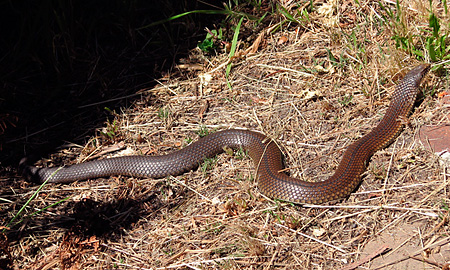Introduction
Snake bites are a serious clinical emergency situation that can happen in numerous environments, specifically in areas where serpents are prevalent. In Yellow faced whip snake bite Australia alone, there are many species of venomous serpents such as the Tiger Serpent, Eastern Brown Serpent, and King Brown Serpent. Australian snake distribution Recognizing how to successfully manage serpent attacks is vital for any person who spends time outdoors or lives in rural areas. This write-up will explore extensive emergency treatment management techniques for serpent attacks and lay out best methods for replying to these incidents.
First Aid Administration of Snake Bites: Best Practices for each Situation
When dealing with a serpent bite, the initial reaction can substantially impact the victim's result. Immediate activity is vital due to the fact that speedy medical treatment frequently figures out the degree of injury or survival price. Here are essential first aid principles to keep in mind:
Stay Calm: The very first step in handling a snake bite is to remain tranquil. Panic can raise heart prices and increase the spread of poison throughout the body. Call for Help: Dial emergency situation solutions right away. Give them with your place and any kind of information about the serpent if possible. Keep the Victim Still: Encourage the victim to remain as still as feasible. Activity can enhance blood flow, increasing poison absorption into the bloodstream. Positioning: If practical, position the affected arm or leg at or listed below heart level. This positioning aids slow down venom spread. Remove Tight Clothing: Loosen any kind of clothes or jewelry around the bite site; swelling might occur quickly after a snake bite. Do Not Use Ice/Cold Packs: As opposed to common belief, using ice can intensify cells damage and should be avoided.Understanding Serpent Types and Their Habitats
Tiger Snakes and Their Habitat
Tiger serpents (Notechis scutatus) are among Australia's many notorious venomous serpents because of their aggressive nature and powerful venom.
- Habitat: They generally occupy seaside regions, marshes, and areas with thick plants like marshes and swamps. Risks: Understanding of neighborhood tiger serpent habitats can minimize the risk of coming across one unexpectedly.
Eastern Brown Snakes: A Considerable Threat
The Eastern Brown Snake (Pseudonaja textilis) is one more highly poisonous varieties found throughout eastern Australia.
- Habitat: This snake flourishes in city locations, farming lands, and grasslands. Behavior: Recognized for its fast strikes when intimidated, understanding its behavior may help reduce encounters.
Recognizing Symptoms of Snake Bites
are white crowned snakes venomousIdentifying signs and symptoms beforehand can boost possibilities of reliable therapy:

- Pain and swelling around the bite site Discoloration or bruising
- Nausea or vomiting Difficulty breathing Signs of shock (e.g., light skin, rapid heart beat)
First Aid Protocols for Certain Snake Bites
First Aid for Tiger Snake Bite
In instance of a tiger serpent bite:
Stay calmness; maintain still. Call emergency situation services immediately. Immobilize the influenced limb making use of a splint if available. Do not try to suck out poison or use ice.First Help for Eastern Brown Serpent Bite
For an eastern brownish serpent bite:
Keep calm; reassure the victim. Call emergency situation solutions without delay. Position them pleasantly while staying clear of movement. Mark the edges of swelling with a pen if possible for observation.Creating Your Serpent Bite First Aid Kit
A well-prepared emergency treatment package can make all the difference throughout emergency situations:
|Item|Function|| -------------------------------|---------------------------------------------------|| Compression plasters|To incapacitate limbs|| Sterilized gauze|To cover injuries|| Antihistamines|For allergic reactions|| Emergency call numbers|Quick gain access to during crises|| Instruction manual|Step-by-step support on taking care of emergencies|
What Should You Never ever Do When Dealing With a Snake Bite?
Here's a listing of usual mistakes when treating snake attacks:
Do not use tourniquets; they can create more damage than good. Avoid cutting into or attempting to suck out venom from the wound. Never provide alcohol or energizers to victims as it can exacerbate their condition.FAQs Concerning First Aid Administration of Serpent Bites
1. What need to I do if I see a snake?
Stay tranquility and pull back slowly without sudden movements.
2. How do I identify if a serpent is venomous?
Research local species' features; numerous have distinct color patterns or markings.
3. Can I use ice on a serpent bite?
No, using ice can boost cells damage.
4. How long do I have actually after being bitten prior to looking for clinical attention?
Seek clinical attention right away-- time is essential with poisonous bites!
5. Is it safe to drive myself to the healthcare facility after a bite?
No! It's harmful as symptoms may aggravate en route; wait for expert help.
6. Are all serpents in Australia dangerous?
No! While Australia has lots of hazardous snakes, there are also non-venomous types that present no threat.
Conclusion
The emergency treatment monitoring of serpent attacks needs prompt action combined with knowledge regarding neighborhood types' actions and environments like those of tiger snakes and eastern brownish serpents in Australia. By adhering to best practices outlined above-- such as continuing to be calm, calling emergency solutions promptly, and recognizing what not to do-- you substantially boost survival opportunities after such crashes occur.

Equipping on your own with knowledge about various sorts of serpents in your location and preparing an appropriate emergency treatment package will guarantee you prepare ought to an encounter occur-- making you much better prepared to manage this potentially life-threatening situation effectively!
